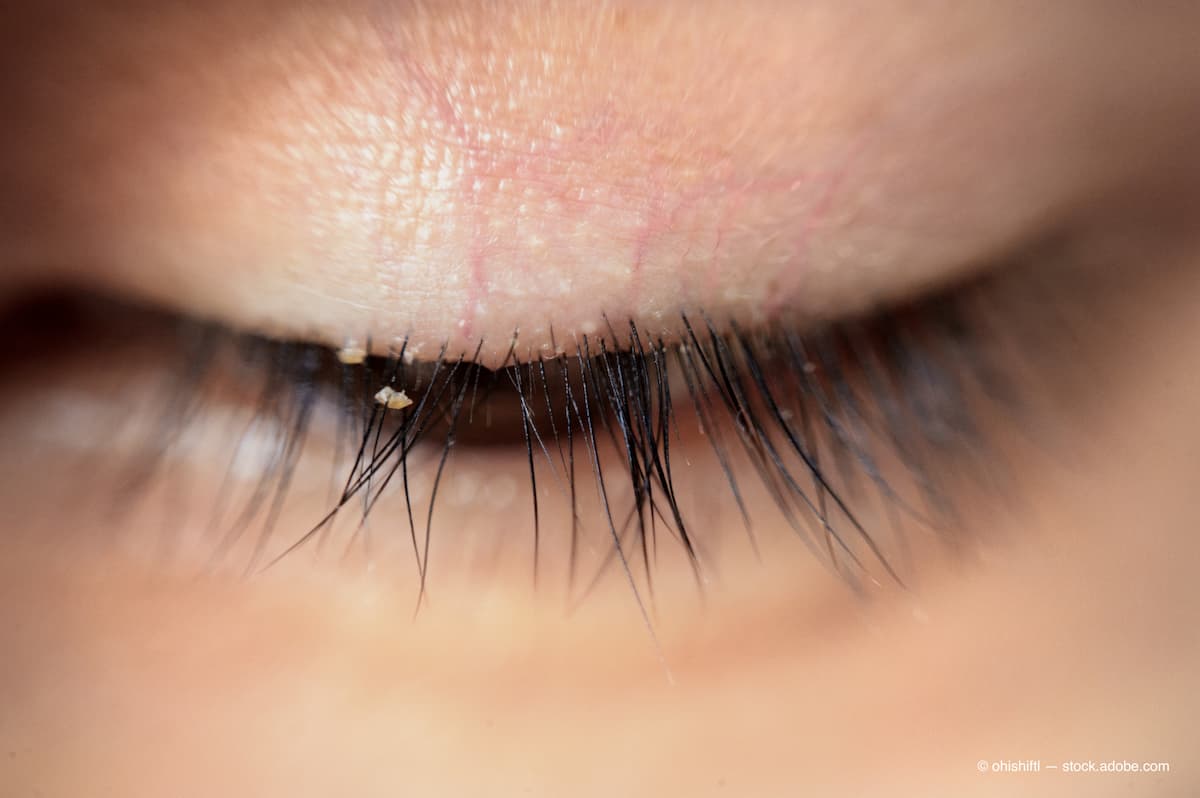Article
Tarsus announces positive topline data of TP-03 from Saturn-2 Phase 3 trial, expects to file NDA later this year
Author(s):
TP-03 met the primary and all secondary endpoints, effectively resolved Demodex blepharitis and was well-tolerated with no serious treatment-related adverse events. 56% of patients on TP-03 achieved the primary endpoint of complete collarette cure.

Tarsus Pharmaceuticals, Inc. today announced positive topline results of TP-03, which met the primary endpoint and all secondary endpoints, in the Saturn-2 Phase 3 trial with a favorable safety profile, reinforcing its ability to treat Demodex blepharitis. With these positive results, Tarsus plans to submit a New Drug Application (NDA) to the U.S. Food and Drug Administration (FDA) in the second half of 2022, according to a press release.
“The positive Saturn-2 data builds on the compelling results we observed in Saturn-1, demonstrating clear consistency in the safety, efficacy and strong clinical value proposition of TP-03. This milestone enables a first potential treatment for Demodex blepharitis and most importantly, provides hope to the millions of patients suffering from this disease,” Bobak Azamian, MD, PhD, president and chief executive officer of Tarsus, said in the release.
“As we direct our focus toward NDA filing and commercialization, we are one step closer to providing a solution to eye care professionals and patients that can resolve this disease," Azamian said.
"We are truly grateful to the many patients who participated in the trial and appreciate their time and commitment despite the challenges presented by the ongoing COVID-19 pandemic," continued Azamian. "We are also sincerely thankful for the investigators and our clinical team who skillfully drove the execution of this successful trial. We’re thrilled to move the regulatory path forward for TP-03, which – if approved by the FDA – will potentially establish a definitive standard of care for Demodex blepharitis and benefit as many as 25 million U.S. patients in need.”
Caused by an infestation of Demodex mites, Demodex blepharitis is the most common ectoparasite found on humans and may affect as many as 25 million Americans, according to the release. Currently, there are no FDA-approved treatments for Demodex blepharitis.
TP-03 (lotilaner ophthalmic solution, 0.25%) is Tarsus’ novel, investigational therapeutic designed to resolve Demodex blepharitis by targeting Demodex mite infestation.
“The high statistical significance and clinically meaningful outcomes in Saturn-2 and Saturn-1 demonstrate the impressive ability of TP-03 to resolve Demodex blepharitis, a disease that has long been without an effective, safe treatment option,” said Elizabeth Yeu, M.D., Director and Chief Medical Advisor for Tarsus. “We know that this disease has a significant impact on patients’ vision and their daily life, and that they often struggle for years without relief. I am thrilled at the prospect of having TP-03 potentially available in the near future.”
Saturn-2 Topline Results
Saturn-2 is a Phase 3 randomized, controlled, double-masked trial evaluating the efficacy and safety of TP-03 in patients with Demodex blepharitis. The trial enrolled 412 adults having more than 10 collarettes per lid and at least mild lid erythema (redness), with at least 1.5 mites per lash. One drop of TP-03 was self-administered twice per day in each eye for six weeks. Enrolled patients received no treatment for blepharitis (e.g., lid hygiene) during the trial or 14 days prior to enrollment.
Key topline results, as stated in the release:
- Primary endpoint: Complete collarette cure, defined as 0 to 2 collarettes per lid at day 43, was achieved by 56% of patients on TP-03, compared to 13% on vehicle (p<0.0001).
- Additionally, 89% of patients achieved a significant, clinically meaningful collarette cure defined by a collarette grade of zero (0) or one (1) at day 43 compared to 33% of those on vehicle (p<0.0001).
- Secondary endpoints:
- Mite eradication: Defined as a mite density of zero (0) mites per lash, was achieved by 52% of patients on TP-03 compared to 14% on vehicle (p<0.0001) at day 43.
- Complete lid erythema (redness) cure: 31.1% of patients on TP-03 compared to 9.0% of patients on vehicle (p<0.0001) achieved a complete lid erythema cure at day 43.
- Complete composite cure: 19.2% of patients on TP-03 achieved a complete composite cure, based on achieving both collarette cure and erythema cure, compared to 4.0% on vehicle (p<0.0001) at day 43.
- Safety Profile: Consistent with Saturn-1, Saturn-2 trial results demonstrated that TP-03 was well-tolerated with a safety profile similar to the vehicle group.
- 91% of patients reported that the drop comfort was neutral to very comfortable.
- There were no serious treatment-related adverse events. The only adverse events occurring at a rate of ≥1% in the TP-03 group were instillation site pain/burning/stinging (7.9%, n=16) and dry eye (1.5%, n=3).
According to the release, TP-03 was evaluated in two pivotal trials collectively involving 833 patients. Both trials met the primary and all secondary endpoints, with statistical significance and no serious treatment-related adverse events. Both trials also demonstrated that TP-03 was generally safe and well-tolerated. If approved, TP-03 may offer treatment for millions of patients with Demodex blepharitis.
Newsletter
Don’t miss out—get Ophthalmology Times updates on the latest clinical advancements and expert interviews, straight to your inbox.




